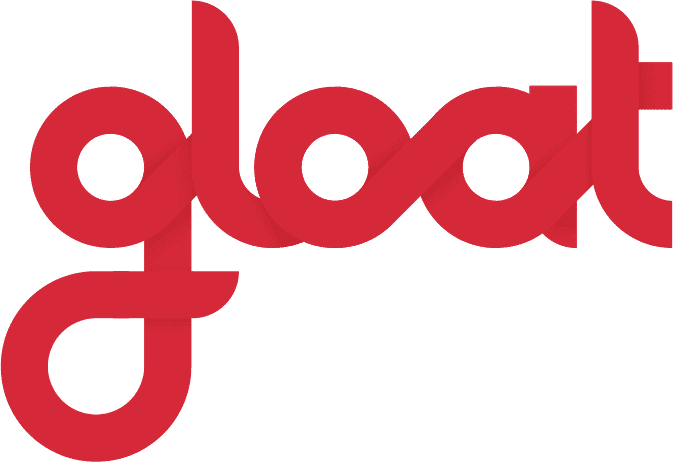Why HR titles are being rewritten for the future of work
What emerging roles can tell us about the new employment deal

The new world of work comes with new norms, new expectations, new technology—and new job titles? Shifting business priorities and emerging challenges are underscoring the need for employees with combinations of skills, experiences, and ambitions that have never been seen before.
Preparing for the next chapter of work presents HR teams with a tremendous opportunity as well as an unparalleled challenge. Leaders are no longer just managing the present; instead, they’re guiding their organizations into the future by architecting more flexible work models, cultivating inclusive cultures, and bridging skill gaps. These strategic priorities are already reshaping the future of HR, and now it’s time for job titles and descriptions to catch up.
However, before executives can rewrite their company’s org chart, they need to develop a comprehensive understanding of their enterprise’s skills, which is where workforce intelligence comes into play. Once leaders gain visibility into emerging knowledge gaps and in-demand skills, reimagining roles and responsibilities will become more clear, and more strategically advantageous.
What are some of HR’s new roles and titles?
Does your business have an Employee Wellness Champion? What about a Director of People Analytics? Or a Global Change Lead?
These are just a few names on the ever-growing list of emerging HR titles. The Cognizant Center for Future of Work recently conceptualized over 20 new roles for our next chapter, each with its own set of responsibilities and required skills. These positions embody five key themes:
- Individual and organizational resilience
- Organizational trust and safety
- Creativity and innovation
- Data literacy
- Human-machine partnerships
We’ve witnessed the rise of new titles within Gloat’s community firsthand. There are dozens of roles that didn’t exist a few years ago—including titles specifically dedicated to preparing for what’s coming next, such as Unilever’s Vice President, Future of Work position.
Although titles might vary, every new role illustrates one key truth: the scope of HR’s role is rapidly evolving. Rather than serving as administrators, the newest generation of HR leaders are strategists who are tasked with rewriting the employment deal to maximize their workforce’s full potential and prepare for tomorrow’s challenges.
4 future of work shifts to prepare for, and the job titles that are trending as a result
To thrive in a future of work that is approaching fast, businesses must develop roles and strategies to keep pace with today’s accelerated pace of change. Here are a few key shifts that are transforming HR’s responsibilities and job titles.
#1. Empowering internal mobility
Traditionally, when there was a vacancy to fill, HR turned to external hiring. However, as the labor market tightens, organizations are harnessing data-driven insights to make strategic decisions about building, borrowing, and buying talent.
Hiring from within comes with its own set of benefits—including minimizing overhead costs. In fact, Gartner found that the cost of employee turnover due to lack of career opportunities amounts to $49 million annually for an average-sized company.
However, some organizations still have a long way to go when it comes to activating internal mobility. Many companies don’t have strategies or technologies in place to guide the process, which is why two-thirds of HR professionals agree that their internal recruiting program needs improvement.
Rather than letting limited access to career development fuel high turnover rates, visionary organizations are introducing talent marketplaces to match people to relevant projects, gigs, and full-time roles based on their skills and ambitions. As internal recruiting rises to the top leaders’ agendas, some roles are getting an upgrade to reflect this focus on mobility, such as Talent Mobility Director or VP of Talent Mobility and Technology.
#2. Nurturing the employee experience
As talent shortages tip the power dynamics of the employee-employer relationship in workers’ favor, leaders can no longer treat their people like cogs in a machine. Instead, employee-led career development is taking precedence as part of a larger shift to creating compelling workplace environments that bring out people’s best.
While 95% of HR leaders agree that employee experience is a top priority, many executives are unsure how to meet their people where they’re at. Ultimately, upgrading employee experience hinges on data-driven insights from workforce intelligence solutions. These platforms give leaders a clear picture of the skills their people have and the competencies they wish to develop. As Josh Bersin explains, “Without the right technology, companies can’t get insights into employee sentiment, provide personalized and job-relevant experiences and development opportunities, or support employees at scale.”
Now that employee experience is taking center stage, many businesses are also rethinking their nomenclature. “Human” is being replaced by “people” to demonstrate that employers are viewing their workforce as individuals rather than merely resources. Forbes notes that more than 10% of their Human Resources Council members now have the word “people” in their titles, with roles like Chief People Officer, Head of People, and Director of People Services as a few popular examples.
#3. Creating a sense of purpose and belonging
Purpose is at the heart of the new employment deal. Employees are looking for organic connections between their employer’s corporate values and their own. They’re also reassessing their perspectives on diversity, equity, and inclusion and demanding more from employers than reports and scorecards. In fact, nearly 70% of workers would consider leaving their company for an organization that takes a stronger stance on societal and cultural issues.
It’s up to HR to not only listen to these calls for change, but also to take action to ensure every team member feels empowered, recognized, and respected. When companies make organizational decisions driven by purpose—by reallocating resources, changing suppliers, and giving employees time to volunteer—the number of people who consider themselves highly engaged increases by 20%.
Meaningful shifts happen when leaders look inside their own organizations and ensure opportunities are accessible to all. As businesses move to democratize career development, they’re also introducing new roles designed to lead the charge, with a 123% increase in diversity-related job postings in less than one year. Titles that are gaining traction include Chief Diversity Officer, Global Head of Inclusion and Diversity, and Head of Talent Enablement and Diversity.
#4. Laying the foundation for resilience
During COVID-19’s onset, resilience became the ultimate priority. For most businesses, the answer to achieving some level of operational continuity was embracing remote work. While this shift was largely beneficial from a business standpoint, it also exacerbated always-on cultures and blurred the lines between personal and professional life. As a result, stress levels skyrocketed, with workplace burnout ticking up by nearly 20%.
Now, organizations are looking to HR to develop more sustainable ways of working that will set employees up for success in the long run. Rather than focusing solely on physical health, leaders must view employee wellbeing holistically. For HR professionals, that means architecting an approach to wellness that encompasses the emotional, mental, and spiritual health of workers, along with the physical. To turn this 360-degree vision into a reality, there’s a new crop of emerging HR roles that put wellness at the forefront. Some popular examples include Employee Wellness Champion, Chief Wellbeing Officer, and Health and Wellness Manager.
To learn more about the steps people leaders must take to prepare for their next chapter, find out how talent marketplaces and workforce intelligence solutions can help you future-proof your workforce.




